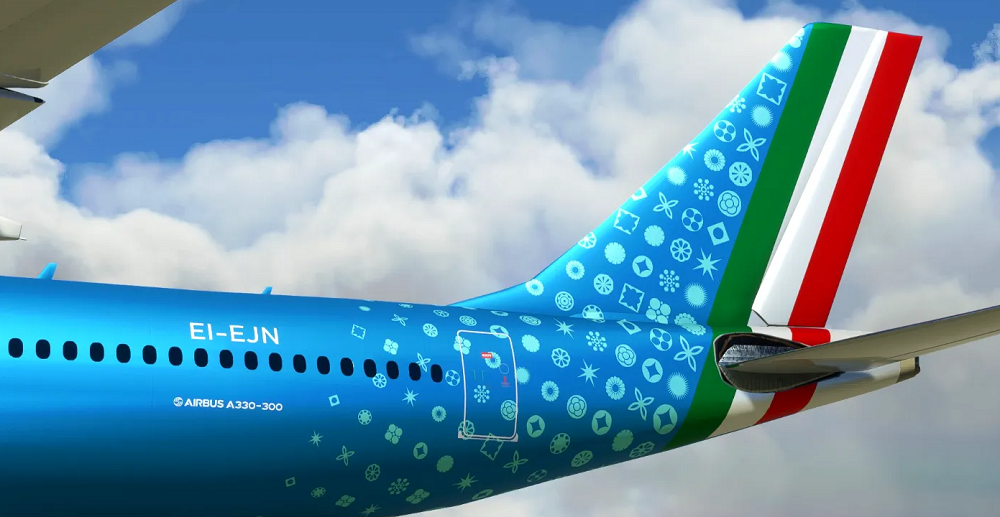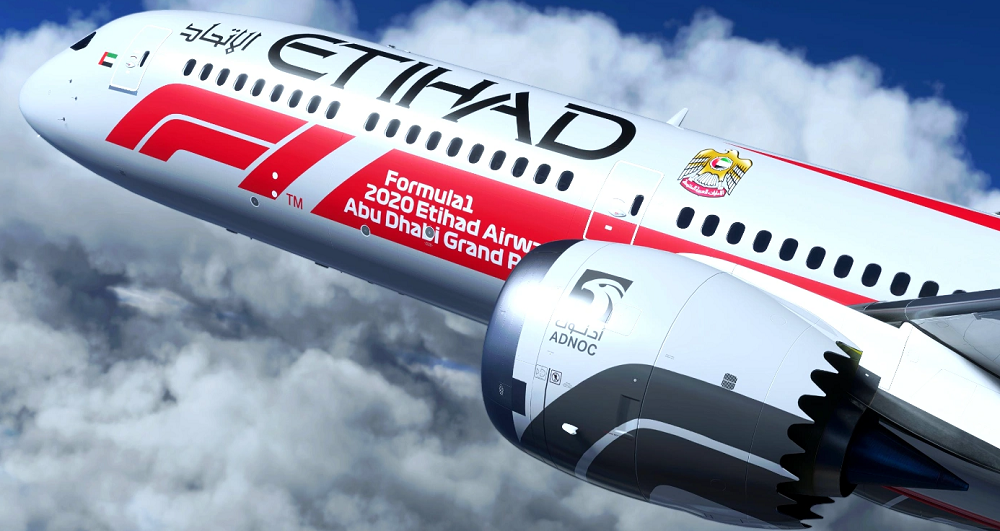Painting an aircraft is a very complex process that requires up to two weeks of work and, sometimes, over one thousand litres of paint. Coatings are certainly important to improve aesthetics, but their main role is actually to protect the aeroplane against corrosion while improving its aerodynamic properties.
Approximately every five to seven years, an airliner has to undergo a new coating phase in order to be able to continue flying safely in the sky. Painting an aircraft is a complex, precise, multi-step process that must be carried out to perfection in order to achieve optimum results in terms of both aesthetics and, above all, efficiency and safety.
The coating process
Before painting, a masking phase is carried out to protect any areas that do not need to be coated, such as windows, engines, and electrical equipment. Given the size of an average commercial aircraft, this takes about two days to complete.
The next step is that of surface preparation. Since in most cases the plane to be painted is not new, but an aircraft to be re-painted as a maintenance operation, the previous layer of paint must be removed before a new coating is applied. There are two ways of removing the existing layer of paint: mechanical and chemical stripping. In the former case, the surface is sanded; however, this is a very demanding and time-consuming process. In the latter case, i.e. chemical paint stripping, the coating layers are eliminated by using special chemicals to dissolve and remove all paint residues. A surface control phase follows paint stripping. A certified aircraft mechanic must inspect the plane before proceeding with the coating phase, as any cracks or surface defects must be repaired before proceeding to the next step.
This is followed by a surface preparation and coating phase consisting in the application of a primer that fosters the adhesion of subsequent layers and of a base coat (often white, as explained later on). The plane is then decorated with the airline’s livery and the colours, logos, and further details are added using stencils. Finally, a transparent top coat is applied, which seals the previous layers of paint and provides protection against erosion by airflow, all types of fluids, and UV radiation. A layer of protective paint is also applied to safeguard the aircraft against corrosion.
Two main types of paint can be used on aircraft, enamel and epoxy. Epoxy is a polyurethane paint that adheres well to surfaces, has a high resistance to chemicals, and does not fade, oxidise, or break easily. Enamel, on the other hand, is cheaper and less dangerous because it does not release certain gases when sprayed. These two products are also often used in combination with each other.
The coating must be applied evenly, paying attention to the amount of paint applied to each side: every layer adds significant weight to the aircraft and any weight difference between the two sides could make the plane unstable. This is checked with a precision laser, which measures the amount of paint deposited on the fuselage.
At the end of the whole process, the aeroplane has to pass a test phase consisting of a series of test flights without passengers in order to check the correct functioning of all its elements.
An aircraft coating process can take from a few days to some weeks depending on the size of the plane and the colour scheme’s complexity.
Why are most aircraft painted white?
Most of the aeroplanes in our skies are white, and this is no coincidence. Of course, each brand has its own livery, with its own logo, various decorations, and coloured stripes, but the main hue of the body of the aircraft is usually white. There are several reasons for this:
1. It reflects sunlight
The main reason why aircraft are painted white is because white is the colour that best reflects sunlight, unlike other tints that absorb it. Planes are constantly exposed to sunlight both while flying and when parked on airport aprons. Therefore, white minimises heating of the interior and prevents potential damage caused by sunlight.
Other colours, on the other hand, would absorb most of the light, causing the body temperature of the aircraft to rise and increasing the risk of serious damage from solar radiation.
2. It fades more slowly than other colours
Travelling at high altitude, aeroplanes are exposed to various atmospheric and weather conditions, including ice, wind, rain, and temperature changes, which quickly deteriorate the paint layer. Coloured paints tend to fade faster than white does and they require more frequent maintenance to preserve their aesthetics.
As it deteriorates less quickly than other colours, therefore, white saves costs associated with painting and grounding the aircraft.
3. It is cheaper and lighter
Aircraft paints are special coatings that contain polyurethane substances and various hardeners and activators and whose cost is much higher when compared to products used in other industries. Among all the colours available, white paint is the cheapest on the market. In fact, the economic factor plays a major role in the selection of a tint, since the surface area of an airliner is so large that it requires 250 to 1100 kg of paint. Specifically, painting a Boeing 737 requires at least 240 litres of paint, whereas the Airbus A380, the largest commercial aircraft ever, calls for up to 3,600 litres.
The colour chosen also has an impact on the plane’s weight: the heavier the aircraft, the higher the fuel consumption and the lower the profit for the airline. Although the applied paint layer is generally thin, given the extent of the surfaces, it can increase the weight of an aircraft by up to 550 kg. Among the products on the market, white paints are the thinnest and therefore the lightest ones. For this reason, too, white remains the preferred colour for aircraft paintwork.
4. It reduces the risk of bird strikes
In aviation, the term bird strike indicates the impact between an aircraft and a bird. Bird strikes occur in most cases during take-off, landing, or low flying, whereas it rarely occurs at higher altitudes. Any impact with birds is a significant threat in terms of aircraft safety, although its severity depends on the weight of the animal, the difference in speed, and the direction of the collision.
Using white improves the visibility of the aircraft and it increases its detection by birds, thus avoiding impact. Using colours other than white may reduce the visual contrast between the plane and the atmosphere, limiting the ability of birds to detect the aircraft in time.
5. It makes it easier to detect damage
Aeroplanes are regularly checked to ensure they are safe. A white livery makes it easier and faster to identify surface damage such as cracks, dents, and other defects.
Coloured liveries
Although white is the colour favoured by airlines, it is obviously not the only one. For example, in order to differentiate themselves from other companies or to give their fleet a tint that is in line with their national identity, airlines may opt for other colours.
ITA Airways
ITA Airways, Italy’s national airline recently created following the takeover of Alitalia, sported a metallic blue livery. However, the chosen colour has raised some criticism because, according to an investigation by Italian newspaper “Domani”, it appears to weigh up to 300 kg more per plane due to the use of mica to achieve the metallic effect. An increase in weight would result into more fuel wastage and a greater impact on the environment, as well as a competitive disadvantage, since fuel consumption has become the first item to be cut in order to reduce costs and increase profit margins. In addition, the metallic colour would prove to be impractical in terms of maintenance, particularly in the belly of the aircraft, where small hydraulic oil leaks often occur and where the paint tends to spoil quickly. As well as to a functional issue, any oil leak could therefore also lead to an aesthetic problem, unless the frequency with which the aircraft is repainted is reduced.

Special liveries
Airlines generally adopt standard liveries for their fleets, but it is now becoming increasingly common to come across colourful, special liveries that are often used for various events and celebrations.
For example, in November 2021, Japanese company Air Do presented an aircraft entirely dedicated to Pokémon. The liveries of its Rockon jets, which have officially entered service in December 2021, feature the Vulpix character, whose name translates into Japanese precisely as Rockon.
Also in Japan, All Nippon Airways Company (ANA) and The Walt Disney Company created another special livery for promotional purposes to mark the theatrical release of “Star Wars”, in 2015. The paintwork of some of the Japanese company’s aircraft was entirely inspired by characters from George Lucas’ saga.
Other special liveries have been created for certain sporting events of global significance, such as the Abu Dhabi Grand Prix in the Formula 1 World Championship.

Other paintwork
celebrated special national anniversaries:
As mentioned at the beginning of this article, the coating of an aircraft is a process of fundamental importance to guarantee its proper functioning and a high level of safety. However, more and more airlines are opting to give their fleet a unique, personalised identity and an attractive appearance.
The ipcm® International Paint&Coating Magazine and its website feature articles and news about the latest innovations and technologies from the aerospace industry. You can browse through all published issues
and subscribe to the digital version free of charge.